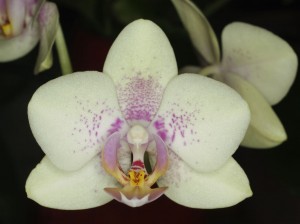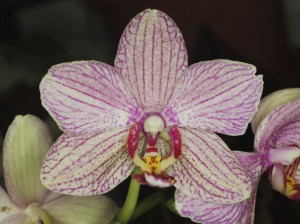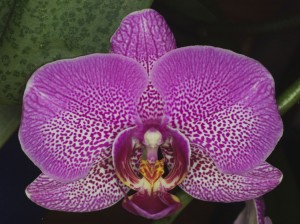Magic lights in Uppsala
Today the art festival “all lights on Uppsala” ended and Christmas season officially started with the 23rd annual fireworks by the local newspaper UNT.

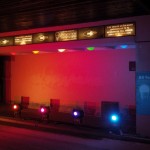
During the festival, the artists and the city officials wanted to emphasize why LEDs will be the light source of the future. At one of the installations the efficiency of the humble incandescent light bulb was compared to the LED. There everyone passing by could read that the incandescent light bulb “converts 75% of the energy into heat and only 25% into light”.
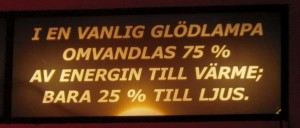
I tried to reach the responsible people already in the first week of the festival, but only got a reply after 2 1/2 weeks. At that time it was considered too late to correct it to the correct number: an incandescent light bulb is much better than pointed out. Not only 75% of the electric energy is converted into heat, but rather 97.5%. Only about 2.5% of the electric power is converted into light!
But in the believe of their 25% efficient incandescent light bulbs it is probably understandable that the city of Uppsala even this year continues to use incandescent lights in their Christmas illumination – while Stockholm has abandoned the use of incandescents for this purpose two years ago.
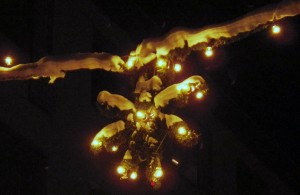
I myself continue to use LEDs in my Christmas decorations. Last year the LED conversion bulbs for the 7-lighted window decorations were only sold in packs of 4 – kind of stupid, unless you had enough of these decorations or wanted to take apart some of the bulbs. This year at least Biltema is selling packs of 7 in two different versions: one with two 3mm LEDs inside the bulb, and one with a single diffuse 5mm LED inside. Both of them appear to be even better than last year’s versions – both in light color and manufacturing quality.
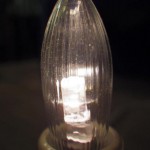
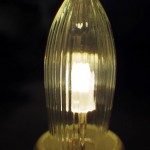
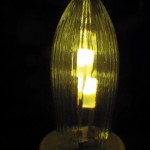
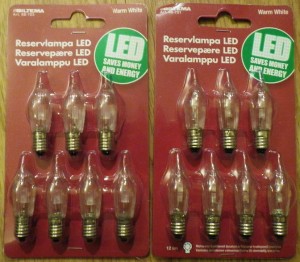
City of Stralsund flogs unique library collection
Money has to be saved everywhere these days, but should a public entity be allowed to flog the family silver? The city of Stralsund, UNESCO world heritage site, has recently silently and covertly sold off a unique library collection.
An online petition was started with the aim to revoke this action:
https://www.openpetition.de/petition/online/rettet-die-stralsunder-archivbibliothek
buying electronics on ebay
Based on my experience buying electronic components on ebay I decided to maintain a personal white-list and black-list of ebay sellers. (more…)
The best LED bulb? – part 2
Ok, let us continue the reverse engineering of the E27 LED bulb LEDARE from IKEA. After describing the actual light emitting diode assembly in the previous post, I will today look deeper under the hood into the power supply.

The power supply itself is located in a plastic cylinder which is screwed to the cast metal housing of the lamp. It is the most elaborate design I have seen so far in any LED or CFL-light. The circuit contains three inductors in the line filter and PFC (power factor correction), two bridge rectifiers, two transformers and only one electrolytic capacitor. Since electrolytic capacitors are the most vulnerable components in these circuits this promises some longevity for the lamp.

The heart of the design can be seen on the bottom side of the circuit board. It is an TPS92070 High-Efficiency Integrated Dimming LED Lighting Driver Controller from Texas Instruments. Even though the LED light bulb itself is marked as not-dimmable, the controller chip itself supports dimming.
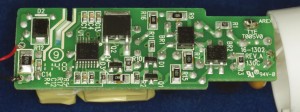

The best LED bulb?
At least the best one I have seen so far. After giving a lecture on LEDs yesterday I finally unpacked and tested my latest buy – the clear E27 LED bulb LEDARE from IKEA.

(Image linked from IKEA’s homepage.)
The specs of this LED bulb are not overly impressive, with an efficacy of a mere 50 lm/W it is about as efficient as a compact fluorescent lamp and with its 400 lm it corresponds to a 30 W to 40 W light bulb. Running at 8.1 W this means that it will consume only 20-25% of the electricity of a comparable incandescent bulb.
But what really amazed me was the high quality of the light. It is a nice warm white, stated as 2700 K on the package, much comparable to the best compact fluorescents I have seen and close to an incandescent – if this is what you are after. Not only is the visual impression of the light very good, also the color rendering is very good.
| socket | E27 |
|---|---|
| size | 59 mm diameter, 119 mm length |
| voltage | 220 V – 240 V |
| power | 8.1 W |
| output | 400 lm |
| color temperature | 2700 K |
| CRI | > 85 |
| lifetime | 20000 h |
| on/off switching | 100000 |
| manufactured in | India |
| price | SEK 99 (EUR 12, Nov. 2012) |
So, how does IKEA accomplish the pleasant spectral composition of the light bulb? I taught my students that the best way to do this is by using the correct blend of phosphors, like in compact fluorescents. But then there was a distinct red appearance when I looked closely at the LED bulb. The LEDs themselves are hidden underneath a light-spreading plastics cone inside the clear glass dome of the bulb – interestingly this cone is screwed to the bulb, not glued as you might expect.
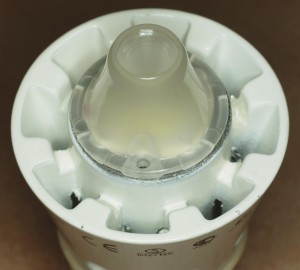
However, the glass dome itself is glued to the solid metal lamp socket which serves as heat sink for the internal converter and the LEDs themselves. I was not able to remove it without breaking, but the rest of the bulb remained undamaged. So how does it look under the hood?
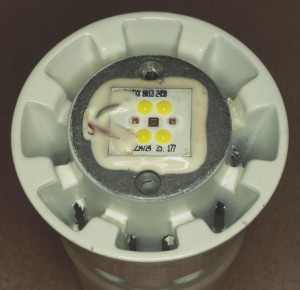
The solid cast metal socket carries a COB (chip-on-board) unit with 6 LEDs:
- four white LEDs, being standard blue LEDs with a phosphor-containing blob of resin on top
- and two big red-emitting LEDs in between.
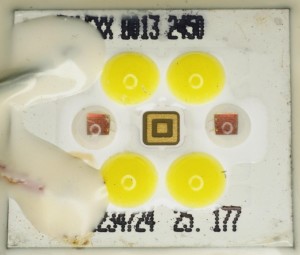
The LED chips are connected in a string with a voltage drop of 16.5 V. One interesting fact about the red LEDs is that there are two bond wires from the board to the front side of the LED chip.
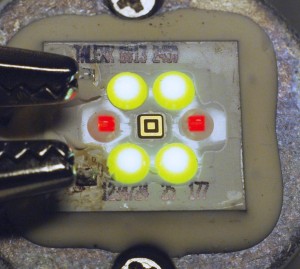
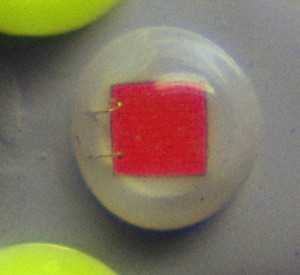
A short inquiry on the internet revealed that the COB module is made by the company Tridonic. More information can be found on their homepage. (more…)
DIY STK505 replacement
The Atmel STK500 development board does support many but not all of Atmels AVR controllers. As an enhancement a STK505 unit was constructed by Atmel to support the ATtiny24/44/84 series…
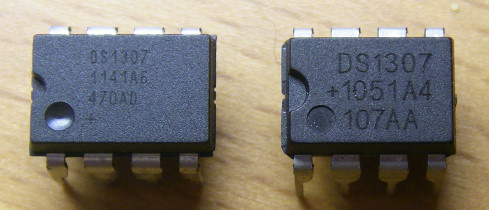
Counterfeit electronics?!
My latest post was about differences within legitimate versions of the same integrated circuit from different manufacturers, today I'd like to write about experiences with supposedly counterfeit components. It has…
Be careful with manufacturers
I just wanted to construct a simple constant-current source using a shunt regulator. The shunt regulator TS431 - which I had lying around - is made by both ST and…
Winter orchids
Three of my orchids are currently lightening up the winter days…
(Pentax K200, SMC Pentax A 1:2 50mm, 12mm extension tube, Walimex ring flash) (more…)
- Go to the previous page
- 1
- …
- 7
- 8
- 9
- 10
- 11
- 12
- 13
- 14
- Go to the next page







